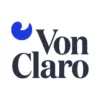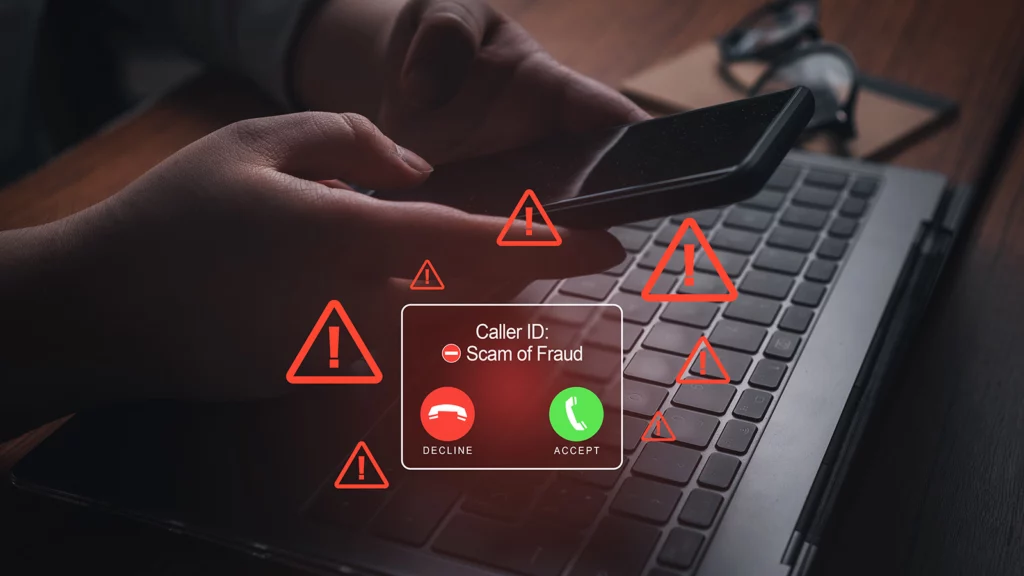In today’s technologically driven marketplace, the integration of digital marketing and social media marketing plays a pivotal role in the success of businesses. While many often question, “Is social media marketing and digital marketing the same?” the reality is that these disciplines, although related, are distinct yet complementary. Understanding their synergy is crucial for maximizing Return on Investment (ROI) and achieving sustainable growth. This article delves into the harmonious relationship between these two strategies, highlighting how their integration can lead to an outstanding multimedia strategy.
Understanding the Basics
Digital marketing encompasses a broad spectrum of online strategies and channels used to promote products, services, and brands. This includes search engine optimization (SEO), email marketing, content marketing, pay-per-click advertising (PPC), and more. On the other hand, social media marketing focuses specifically on promoting content and engaging with audiences through social media platforms like Facebook, Twitter, Instagram, and LinkedIn.
While it’s essential to recognize their distinctiveness, acknowledging the overlap between digital marketing and social media marketing allows for better strategic alignment, leading to synergistic benefits for your campaigns.
Integrating Digital Marketing with Social Media Strategies
- Unified Brand Messaging: One clear advantage of integrating these strategies is the ability to maintain a unified brand message across all digital platforms. By ensuring that your multimedia strategy and social media content align with your overall digital marketing objectives, you create a consistent brand image that builds trust and recognition.
- Enhanced Data Analytics: Another compelling reason for synergy is the opportunity for enhanced data analytics. Both digital and social media marketing platforms provide diverse analytics tools that can be combined to deliver deeper insights into consumer behavior, campaign performance, and ROI. Utilizing these insights enables marketers to refine their multimedia strategies and optimize their efforts for better results.
- Amplified Audience Engagement: Digital marketing campaigns gain a significant boost when complemented by social media marketing efforts. Social platforms provide an avenue for direct interaction with your audience, increasing engagement and driving traffic to your website or landing pages. This dual approach ensures higher conversion rates and fosters stronger customer relationships.
- Cost Efficiency: Integrating digital marketing and social media marketing allows for more cost-effective media strategies. Cross-promotion between digital channels and social media can maximize reach with minimal additional investment. Additionally, the ability to track and measure campaigns in real-time means you can swiftly re-allocate resources to the highest-performing channels, ensuring optimal ROI.

Frequently Asked Questions
Is Social Media Marketing and Digital Marketing the Same?
No, they are not the same. Social media marketing is a subset of digital marketing. Digital marketing includes a wide range of online marketing tactics, whereas social media marketing specifically focuses on leveraging social media platforms to reach and engage audiences.
Can Small Businesses Benefit from These Strategies?
Absolutely. Small businesses can benefit immensely from the integration of digital and social media marketing. These strategies are scalable and can be tailored to fit different budgetary constraints, making them accessible and effective for businesses of all sizes.
How Can I Measure the Success of My Integrated Strategy?
Measurement can be achieved through analytics tools provided by various platforms. Key performance indicators (KPIs) such as conversion rates, engagement rates, click-through rates (CTR), and ROI should be monitored to gauge success. Combining data from multiple sources can offer comprehensive insights into your campaign’s effectiveness.
Digital Marketing and Social Media Marketing FAQ
What are key strategies to maximize ROI in digital and social media marketing?
Maximizing ROI (Return on Investment) in digital and social media marketing requires a well-rounded approach that focuses on multiple facets of these dynamic marketing channels. Here are some key strategies:
Audience Targeting and Segmentation
- Identify and define your target audience.
- Use data analytics and insights to create segmented audience groups.
- Tailor your messages and content to each segment to improve engagement and conversion rates.
Content Marketing
- Create high-quality, relevant, and engaging content.
- Utilize various content formats such as blogs, infographics, videos, and podcasts.
- Align your content with your audience’s interests and pain points.
Data-Driven Decision Making
- Utilize tools like Google Analytics, social media insights, and CRM systems to gather data.
- Monitor key performance indicators (KPIs) and adjust strategies accordingly.
- Implement A/B testing to determine high-performing strategies.
Integrated Marketing Campaigns
- Combine different digital channels (email, social media, SEO, PPC) for a multi-faceted approach.
- Ensure consistent messaging across all channels.
- Use retargeting campaigns to reengage potential customers.
Influencer Partnerships
- Collaborate with influencers who align with your brand values.
- Track and measure influencer performance by looking at engagement rates and conversions.
- Use influencers to expand your reach and credibility.
Cost Optimization
- Continuously monitor and optimize budgets for ad spending.
- Utilize programmatic advertising to make real-time adjustments.
- Focus on customer lifetime value (CLV) instead of just short-term gains.
How can digital marketing and social media marketing strategies work synergistically?
Digital marketing and social media marketing are not mutually exclusive and can significantly enhance each other when integrated properly. Here are some ways they can work together:
Cross-Platform Consistency
- Maintain consistent branding across all digital channels including websites, email, and social media platforms.
- Use cohesive messaging to reinforce brand identity and recognition.
Drive Traffic Between Channels
- Use social media to drive traffic to your website, blog, or online store.
- Implement social sharing buttons on your website to encourage users to share content.
- Use email marketing to promote your social media profiles and vice-versa.
Unified Customer Journey
- Map out a customer journey that spans both digital and social media touchpoints.
- Use retargeting strategies to reengage users who have shown interest through social media interactions.
Comprehensive Analytics
- Utilize integrated analytics platforms that combine data from various digital and social media sources.
- Leverage insights from both to fine-tune marketing strategies and campaigns.
Holistic Campaigns
- Plan and execute campaigns that use multiple channels for greater reach and impact.
- For example, a product launch can be promoted through emails, social media posts, and paid ads running in tandem.

What tools can be used to effectively track ROI in both digital and social media marketing?
Tracking ROI accurately is crucial for maximizing the effectiveness of your marketing efforts. Here are some indispensable tools:
Google Analytics
- Tracks website traffic, conversion rates, and user behavior.
- Measures the effectiveness of digital ad campaigns.
Social Media Analytics Tools
- Facebook Insights, Twitter Analytics, Instagram Insights: Offer in-depth metrics related to engagement, reach, and follower demographics.
- Hootsuite, Buffer: Provide cross-network performance reports and metrics to streamline social media management.
Customer Relationship Management (CRM) Systems
- Salesforce, HubSpot, Zoho CRM: Track customer interactions across all channels.
- Measure long-term value generated from different marketing efforts.
Advertising Platforms
- Google Ads, Facebook Ads Manager: Offer robust ROI tracking features, including cost-per-click (CPC), cost-per-conversion, and more.
Marketing Automation Tools
- Marketo, Mailchimp: Provide comprehensive insights into email campaign performance and track cross-channel ROI.
Click and Conversion Tracking
- Bitly, UTM Parameters: Track where clicks and conversions are coming from to better understand the effectiveness of each channel.
How can digital marketing and social media marketing enhance each other for improved ROI?
To achieve the best possible ROI, digital marketing and social media marketing should be designed to complement each other in the following ways:
Content Amplification
- Use social media to amplify the reach of your digital content (blogs, videos, infographics).
- Encourage sharing and engagement to extend content lifespan and reach.
Unified Brand Messaging
- Ensure that the tone and messaging in your digital ads align with your social media content.
- Cohesive branding helps build trust and recognition across multiple platforms.
Customer Engagement and Feedback
- Use social media channels for real-time customer engagement and gather feedback.
- Incorporate social insights into your broader digital marketing strategies.
Enhanced Targeting
- Leverage social media’s detailed targeting options to direct traffic to your digital assets, such as landing pages and e-commerce sites.
- Utilize lookalike audiences to find new potential customers who resemble your current customer base.
Improved Data Utilization
- Share data insights across both digital and social teams to create more informed strategies.
- For example, social media trends can provide immediate insights that can be implemented in longer-term digital marketing strategies.
By following these guidelines and leveraging these strategies and tools, you can maximize your ROI in both digital and social media marketing efforts, ultimately driving sustainable growth for your business.
In Conclusion
The synergy between digital marketing and social media marketing offers a powerful avenue for maximizing ROI and achieving business goals. By integrating these strategies into a cohesive multimedia strategy, businesses can benefit from unified brand messaging, enhanced data analytics, amplified audience engagement, and cost efficiency. Small and large businesses alike can harness these benefits for greater effectiveness and sustainable growth.
By understanding and exploiting the strengths of both digital marketing and social media marketing, marketers can ensure that their campaigns are not only impactful but also capable of delivering measurable and significant returns. In summary, the integration of digital marketing and social media marketing represents a strategic approach to optimizing multimedia efforts and maximizing ROI.


